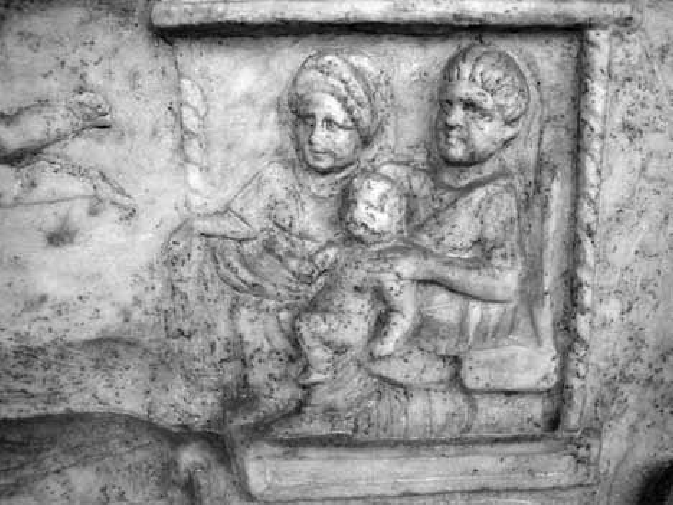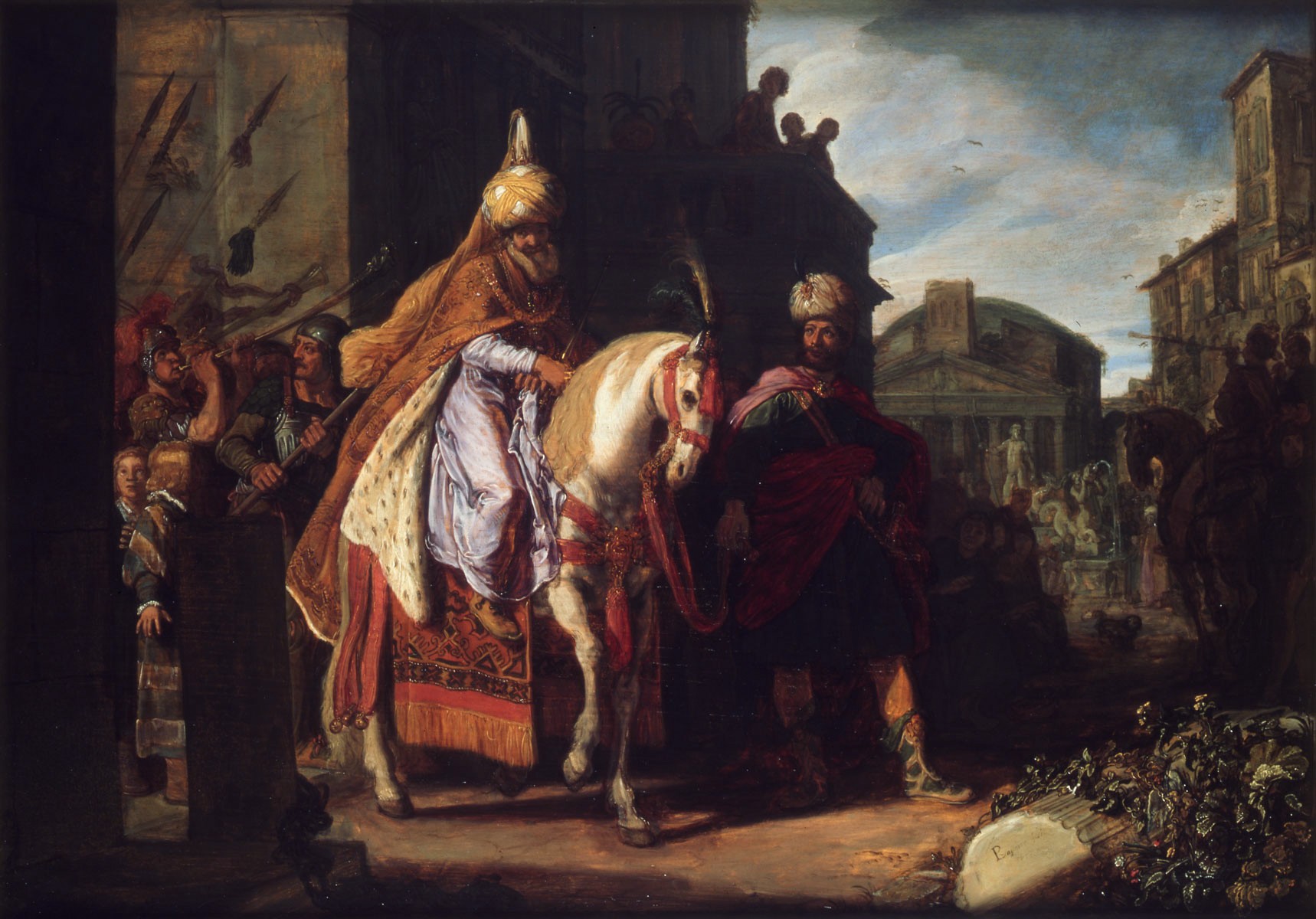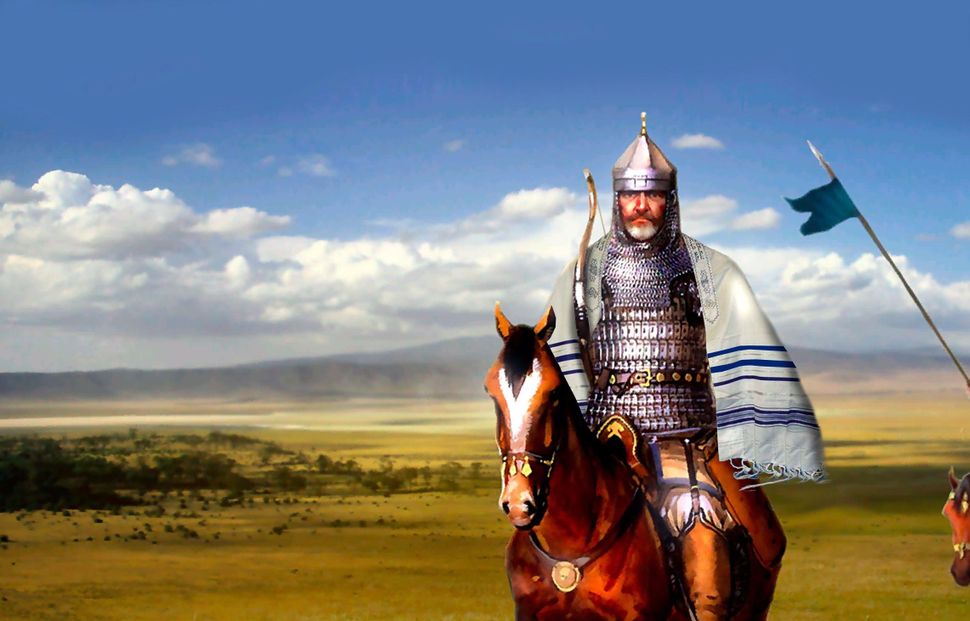Overview: Patrilineality in biblical times, Ezra’s reforms, the reasons why later rabbis changed the status quo, and the fringe rabbinic views eventually blurred out.
This question has theological implications, political implications, and historical implications. We will only be dealing with the latter, examining the historical approaches to determining Jewishness. Many people mistakenly believe that the criteria were laid out clearly at Sinai and have ever since been based on matrilineality, but that doesn’t seem to fan out with biblical and historical texts. This is also essentially baseless as no Mishnaic or Talmudic texts claim matrilineality to be a tradition from Sinai.[1]
This topic closely relates to the question of conversion to Judaism. While no conversion idea or procedure is mentioned in Torah, we do see foreigners entering the Israelite community and becoming full-fledged members (Deut. 23:4, 9, Ruth 4:11, Esther 8:17). It is likely that they had to accept the Israelite God (Ruth 1:16) and the males to circumcise (Gen. 17:12). Later in rabbinic times, ritual bathing was added as well (Keritot 9a). The procedure remained relatively lenient until recent times when the Orthodox movement reformed the conversion process in response to cultural changes (see here). Most Jews today have at least half their DNA from many European and other non-Israelite Semitic populations.[2] This sheds light on the importance that conversion played in our history and the forming of us as a nation today.
Pre-Sinai times
Before the formation of the Jews as a people at Mt. Sinai, the determination of being an Israelite was based on self-identification as being an Israelite and joining their community/culture. Many “mixed multitude” joined the Israelites in their exodus from Egypt and seemed to have integrated into the Israelite nation. On the other hand, some of Abraham and Isaac’s descendants forged for themselves a non-Jewish identity, such as Esau forming the Edomites and Ishmael, forming Arabian tribes.
This self-determined identification was mostly based on patrilineality as per the norms of the time, in which the wife would join the husband’s household. Therefore, 12 sons of Jacob form the 12 tribes of Israel, whereas Dinah, daughter of Jacob, seems to have faded away into history, probably as a result of marrying into another non-Israelite tribe. Jewish men often married non-Israelite women who joined their husband’s tribe/nation. Prominent examples include Joseph who married an Egyptian woman, Judah a Canaanite woman, and Moses a Midianite and a Cushite. Their descendants remained Jewish, probably out of patriarchal social norms rather than strict legal patrilineality.
According to some Jewish traditional sources as well, patrilineality was the practice before the inauguration of the Israelites as God’s “Chosen Nation” at Sinai. Lev. 24:10-23 records a narrative in which an Israelite man curses God and is sentenced to death. His lineage is described as having an Israelite mother and an Egyptian father. The Midrash (also cited by Rashi) comments that he converted to Judaism (prior to the Mt. Sinai revelation).[3] Since his mother was Jewish, we must suggest that at least before Sinai, patrilineality was the system in place. Nachmanides (on Lev. 24:10) cites French scholars (probably referring to the Tosafot academy) who believe that prior to Sinai, Jewishness followed via the father and thus this man needed to convert in order to join the Israelites.[4]
Biblical times
While it cannot be stated with certainty, it does still seem that Jewishness was determined by patrilineal descent even after Sinai into the biblical era. The Israelites were essentially the “sons of Jacob,” known as the 12 tribes of Israel. Tribalism was defined by the father’s tribe (l’bet avotam – Num. 1:2) since in those times the wife would join the husband’s household. Perhaps the most explicit verse referencing patrilineality is from Ezra 2:59 (also in Neh. 7:61) “The following were those who came up from Tel-melah, Tel-harsha, Cherub, Addan, and Immer—they were unable to tell whether their father’s house and descent were Israelite.”
King Solomon is said to have married foreign women of all stripes. If we take the biblical number literally, he had one thousand wives and probably thousands of children as a result. These children, of non-Jewish mothers, were absorbed into the Israelite community with King Rehoboam also being the son of an Ammonite wife of Solomon.[5] This would suggest patrilineality in this era. It is unlikely that these wives of Solomon converted, since they were pagan-worshippers and eventually caused Solomon to stray from God (I Kings 11).[6]
Despite patrilineal descent, Jews were prohibited from marrying into pagan-worshipping nations out of concern that they get culturally influenced by these nations (Deut. 7:3-4, I Kings 11:2).[7] This is why Ezra has Judeans divorce their foreign wives and send away their children (Ez. 10:3). He was worried that their pagan backgrounds would fracture the already fragile Jewish identity (the same concern of the biblical prohibitions against intermarriage). Ironically, some use this episode as biblical evidence for matrilineality.[8] But had that been the case, Ezra could have just converted the wives and children. Clearly, then, his concern was cultural influence from these foreign pagan-worshippers.
Second temple era
Rabbinic Judaism, in historical terms, describes mostly the post-destruction Yavneh rabbinical institutions and reforms. Prior to that, Rabbinic Judaism (whose adherents were called Pharisees) was far less influential and far less developed. It seems that while the idea of matrilineality was widespread in the post-destruction Yavneh period, it was not yet a concept before then, during the second temple era. Patrilineality was still the acceptable way in which mixed marriages would enter the Jewish community. There may not have yet been set definitions for the “who is a Jew” question. The term “half Jew” was often used for the descendants of mixed marriages, Herod the Great being a good example.
As the child of a forcibly-converted Idumaean grandfather (whom the Sadducee-influenced Hasmonean leader John Hyrcanus forcibly converted after conquering them), Herod’s Jewishness was questioned by the populace who called him a “half-Jew.” Josephus also mentions this, explaining that he was a half-Jew due to his paternal ancestry. No mention is made of his Nabatean mother in this context. This would be odd if Jewishness was solely determined by maternal descent. There’s also no mention of his Nabatean mother converting to Judaism. What’s ironic about this lack of mention is that Josephus routinely goes into describing the conversion (and sometimes lack thereof) of Gentile men marrying female Herodian princesses. On the other hand, he does not discuss the conversion/non conversion of foreign women marrying the princes of the Herodian dynasty, assuming they are obviously absorbed into the male clan.[9]
Philo of Alexandria calls the child of a Jew and a non-Jew a nothos (bastard), regardless of whether the non-Jewish parent is the father or the mother. However, it can be argued that this term merely denotes an offspring of “interbreeding of ethnicities” or “impure lineage.”[10] If intended literally, this may be the same view of a fringe rabbinic view soon to be discussed.
Rabbinic times
By the time of the earliest rabbinic writings (Mishnah and Tosefta), the law that Judaism was passed through the maternal line was well entrenched in Judaism. There doesn’t seem to have been any dispute about the Jewish identity of a child born to a Jewish mother.[11] However, some still did consider the child of this mixed marriage to be a mamzer, a Jew who is not to marry into the broader non-Mamzer Jewish community.[12]
According to at least one Talmudic approach, it isn’t enough to have a maternal Jewish ancestry, but a Jewish identity is also necessary. Accordingly, the maternal-line descendants of the Ten Lost Tribes, are not regarded as Jews, despite having maternal Jewish ancestry. According to the other approach in the Talmud, all the females of the Ten Lost Tribes became sterile and bore no children![13]
The Rabbi’s prooftext for matrilineality is from Deut. 7:4. But this prooftext is erroneous (or, was never intended as literal prooftext[14]). It assumes that “your son” means “grandson,”[15] which is an unwarranted assumption. There is no necessity for that assumption, and also the previous verse mentions “son” referring to a literal son, making it unlikely that the definition of son is changing in this verse. The verse’s intention seems obvious: it’s a polemic against intermarriage that can cause cultural influence on the Jewish spouse, as we see with King Solomon (I Kings Ch. 11) and with the Midianites in the Wilderness (Num. 25:1-2).[16]
It is not clear why the rabbis instituted matrilineality but several suggestions have been offered.
Some speculate that it is based on the Roman law that followed the mother’s religion for citizenship and slavery, in cases where a Roman citizen married a non-citizen or a slave.[17]
Others speculate that it was instituted as a result of an epidemic of rapes, when Roman soldiers would rape local women or when non-Jews would attack Jewish communities in pogroms. The influx of births, with unknown fatherhood, resulted in a legal transformation from patrilineality to matrilineality. This served to protect these children and the many future children to come about in exile with unknown paternity. This change coincided with the land-based patriarchy (that was the reason for patrilineality in earlier times) that shifted to the constant migrations that the Jews were to endure from that point on in exile.
___________________
[1] While they do often attribute it to a biblical verse, by reinterpreting these verses, it can be explained as an asmakhta (which is sometimes even used for rabbinic reforms – see here).
[2] https://www.science.org/content/article/tracing-roots-jewishness
https://www.nature.com/articles/ncomms3543
[3] (Sifra, Emor 14:1, also cited in Rashi to Lev. 24:10).
[4] See also Hizkuni on Lev. 24:10 for a similar explanation.
[5] It would be unreasonable to assume that they were rejected from the community or forced to convert since no such mention is made in any biblical texts. Later biblical texts even mention “the servants of Solomon,” and had there been a separate community for Solomon’s children, surely they would have been mentioned.
[6] Even if some did convert to Judaism, I Kings Ch. 11 suggests that many of them haven’t and remained pagan-worshippers.
[7] See also Jud. 14:3 regarding an Israelite taboo against marrying the uncircumcised Philistines, although this may just be cultural rather than a legal Torah law.
[8] Midrash Numbers Rabbah 19:3, Jerusalem Talmud Kiddushin 3:12.
[9] https://www.academia.edu/36175582/Shaye_J_D_Cohen_The_Origins_of_the_Matrilineal_Principle_in_Rabbinic_Law_AJS_Review_10_1_Spring_1985_19_53 (p. 29).
[10] https://www.academia.edu/36175582/Shaye_J_D_Cohen_The_Origins_of_the_Matrilineal_Principle_in_Rabbinic_Law_AJS_Review_10_1_Spring_1985_19_53
Footnote 31.
[11] Mishnah kiddushin 3:12, Yevamot 2:5, and Yevamot 7:5.
In a narrative recorded in Avot d’Rabbi Natan Ch.16, it appears that, at least according to some early rabbis, the child of a Jewish (priestly) father and a gentile woman is deemed a mamzer (who is Jewish). However, this story of Rabbi Zadok of Rome isn’t clear. Perhaps when saying mamzer he was referring to a slang word of “bastard” – not necessarily an actual mamzer who would be considered Jewish. It also may have just been a defense to his master. As a defense, it would explain why he mentions that he’s a priest. In Jewish law, there wouldn’t be a difference if he were a priest or not, suggesting that he was merely making a case of defense to his Roman captor rather than speaking from a Halachic perspective.
In a more extreme view, Yaakov of Naboria, ruled that the child of a non-Jewish mother and Jewish father is a complete Jew. He was rebuked by Rabbi Haggai and retracted his ruling (Talmud Yerushalmi Yevamot 2:6).
[12] According to Yevamot 7:5, although being Jewish, the child of a gentile father is deemed a Mamzer. This view is creatively reinterpreted in the Talmud (Yevamot 69b-70a) and reversed to not consider him a mamzer. This lenient approach becomes Halacha. Tosefta kiddushin 4:12 also considers him a mamzer but Rabbi Simon, cited there, disagrees. Philo also calls the child of a mixed marriage (mentioned above).
[13] Yevamot 17a.
[14] See here for a discussion on rabbinic asmakhta.
[15] See Rashi on the verse.
[16] As for why specifically “son” and not “daughter” is singled out in the verse (in contrast to verse 3), it can be suggested that one implicitly infers the other or that “son” is generic for “children,” e.g. sons of Israel that refers collectively to all male and female members of the Israelite tribes.
[17] https://archive.jewishrecon.org/resource-files/files/Shaye%20Cohen%20-%20the%20Matrilineal%20Principle%20in%20Historical%20Perspective.pdf




